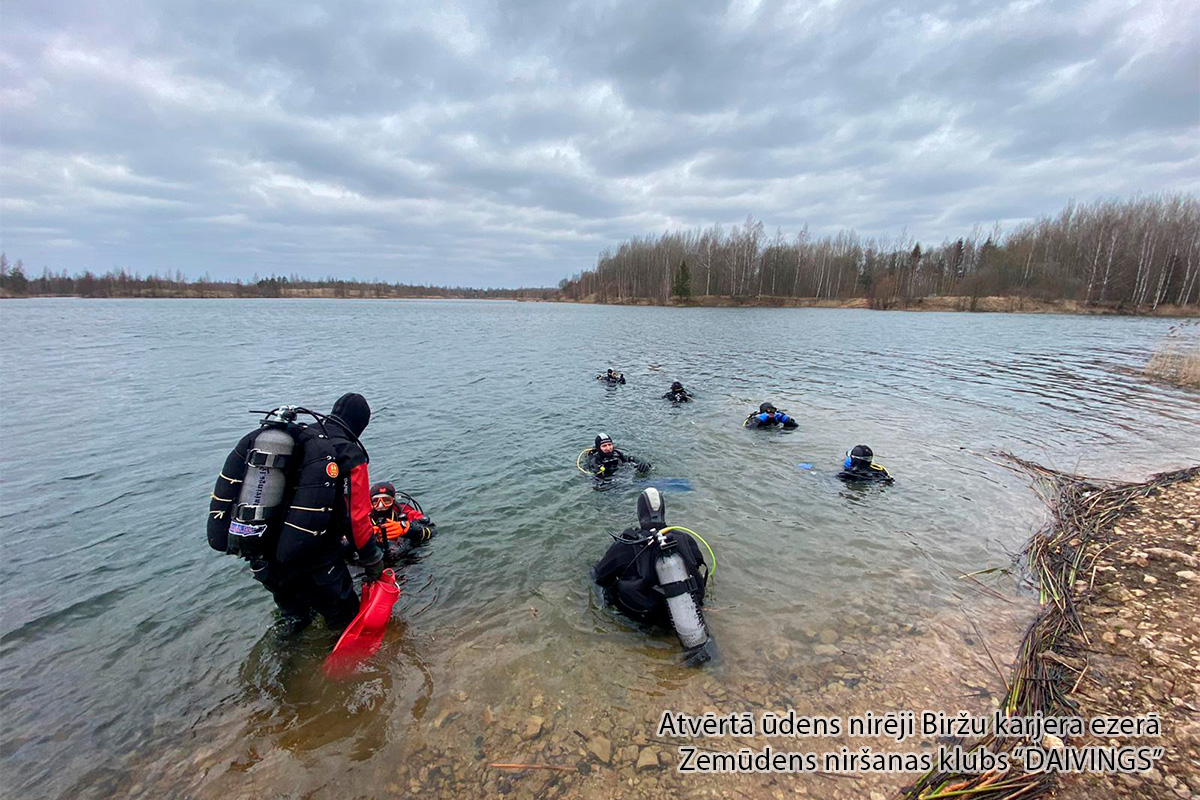We have carried out scuba diving in the Rži quarry reservoir and surveyed it to assess the suitability of the lake for scuba diving.
How to get to Raju Career:
Rajju quarry is located in Jēkabpils, Krustpils parish. You can get from Riga to Jēkabpilis by car along the A6 highway or by bus. You can get to the quarry from Jēkabpils by car along the Krustpils road.
Rules of diving in the Raju quarry:
- Diving in the quarry is only allowed with the accompaniment of a diving center.
- Divers must be certified and follow diving safety regulations.
- Divers should familiarize themselves with the quarry map and plan their dive route.
- Divers must follow the rules of prohibition of water pollution.
Diving in the Raju quarry is a great opportunity to enjoy the natural beauty of Latvia and get to know the underwater world.
Raju Quarry is a favorite place for both experienced and beginner divers. Diving conditions at the quarry are generally good, with good visibility and water temperatures reaching 20 degrees Celsius in summer.
It is possible to see a variety of fish in the quarry, including pike, crucian carp, carp, zander, catfish, bream, carp, perch and tench. The quarry also houses the second largest Latvian giant stone - the Radžu giant stone, which weighs 220 tons and has a circumference of 19 meters.
The underwater diving club with a team of certified divers - divers - conducted an organized dive in one of the most beautiful bodies of water in Latvia, the Radžu dolomite reservoir in Jēkabpils. Recommended for Advanced Open Water diver, Open Water diver and higher certified divers under the guidance of Daivings club instructors.
Let's look at DOLOMITE WALL, ROCKS, UNDERWATER FOREST, STONE, maximum depth < 10 meters. We explore the clear water of the lake and the deep end of the quarry.

The lake also contains the Radži boulder, which weighs 220 tons, has a circumference of 19 m, and is the second largest boulder in Latvia, after the Great Stone of Nicgale. The reservoir is inhabited by: pike, carp, carp, pike-perch, catfish, bream, carp, perch and line. Prior to the construction of the quarry, there was an airfield at this location.

Log in to 22077202 WhatsApp.
Find out more about the popular diving sites in Latvia, here
Learn to dive together in the diving club "Diving", here

